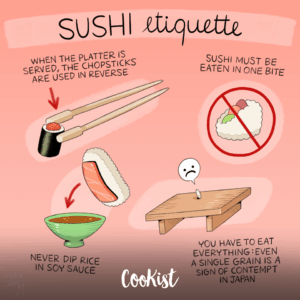Welcome, fellow food enthusiasts! Are you ready to embark on a culinary adventure that’s both surprisingly simple and incredibly rewarding? Today, we’re diving deep into the art of making pickled eggs, a timeless classic that’s experiencing a well-deserved resurgence. This isn’t just any pickled egg recipe; this is your comprehensive guide, taking you from novice to pickled egg pro. We’ll explore various techniques, troubleshoot common issues, and equip you with the knowledge to create the perfect batch every time. As the experts at “The Pickled Perfection Blog” say, “Pickling is an art, and mastering it unlocks a world of flavor!” Let’s get started!
Choosing Your Eggs: The Foundation of Flavor
The quality of your eggs directly impacts the final taste and texture of your pickled eggs. Opt for fresh, high-quality eggs with strong shells. Avoid eggs with cracks or imperfections, as these could compromise the pickling process and increase the risk of spoilage.
- Freshness is key: Use eggs that are as close to their lay date as possible. Older eggs may have a slightly different texture when pickled.
- Brown vs. White: There’s no significant difference in taste or texture between brown and white eggs when pickled. Choose your preference!
- Size matters: While you can pickle any size egg, medium-sized eggs are generally ideal as they offer a good balance of yolk-to-white ratio and overall size.
Preparing the Eggs: The Perfect Hard Boil
Before embarking on the pickling process, you’ll need perfectly hard-boiled eggs. This step might seem straightforward, but mastering it is crucial for achieving optimal texture.
- Gentle simmer: Place the eggs in a single layer in a saucepan and cover with cold water by about an inch. Bring the water to a gentle simmer, then reduce heat and cook for 8-10 minutes (for medium-sized eggs). Cooking time may vary slightly depending on egg size.
- Ice bath shock: Immediately after cooking, transfer the eggs to a bowl of ice water to stop the cooking process and prevent further cooking from residual heat. This helps create a smooth, easily peelable texture.
- Gentle peeling: Once cool, gently tap the eggs all over to create small cracks in the shell. Peel the eggs under cold running water. Be patient to avoid breaking the eggs. Use a spoon to help remove stubborn bits of shell.
The Brine: The Heart of the Pickling Process
The brine is the magic ingredient that transforms simple hard-boiled eggs into delectable pickled delights. The recipe below creates a flavorful and vibrant brine. Experiment with different spices and additions to customize your perfect brine.
Basic Pickled Egg Brine Recipe
- 1 cup white vinegar (distilled or white wine vinegar)
- 1 cup water
- 1/4 cup pickling salt (not table salt)
- 2 tablespoons sugar
- 1 teaspoon black peppercorns
- 1 teaspoon mustard seeds
- 1 bay leaf
- 1/2 teaspoon turmeric (optional, for color)
- 1/4 teaspoon red pepper flakes (optional, for heat)
Combine all ingredients in a saucepan. Bring to a simmer, stirring until the salt and sugar dissolve completely. Allow to cool completely before adding the eggs.
Pickling the Eggs: The Art of Patience
Once your brine has cooled, gently place the hard-boiled eggs into a clean, sterilized jar. Ensure the eggs are fully submerged in the brine. Leave some headspace at the top of the jar to allow for expansion. You want to make sure all the eggs are fully covered.
- Refrigeration: Refrigerate the jar for at least 24 hours. The eggs will begin to absorb the brine and develop their characteristic pickled flavor.
- Longer is better: While they’re edible after 24 hours, the flavor intensifies with longer pickling times. For optimal flavor, consider pickling for 3-5 days or even longer.
- Storage: Properly stored pickled eggs can last for several weeks in the refrigerator. Always ensure the eggs remain fully submerged in the brine.
Beyond the Basics: Experimenting with Flavors
The beauty of pickled eggs lies in their versatility. Don’t be afraid to experiment with different flavor profiles.
Flavor Variations:
- Spicy Pickled Eggs: Add more red pepper flakes or a few slices of fresh chili peppers to the brine for a fiery kick.
- Dill Pickled Eggs: Incorporate fresh dill sprigs or dill seeds for a herbaceous and refreshing twist.
- Garlic Pickled Eggs: Add a few cloves of crushed garlic to the brine for a pungent and savory flavor.
- Curry Pickled Eggs: Experiment with curry powder or garam masala for an exotic and aromatic experience.
- Sweet and Sour Pickled Eggs: Adjust the sugar content in the brine to create a balance between sweet and sour flavors.
Troubleshooting Common Pickled Egg Issues
Even experienced picklers encounter occasional setbacks. Here are some common problems and their solutions.
- Eggs cracking during peeling: This can be due to overcooking or jarring the eggs during cooling. Try gentle simmering and a careful ice bath.
- Eggs not fully submerged in brine: Add more brine or use a smaller jar to ensure complete submersion.
- Cloudy brine: This is often a sign of bacteria growth. Discard the brine and eggs if the brine becomes cloudy, especially if accompanied by an unpleasant odor.
- Eggs becoming rubbery: This might be due to overcooking the eggs initially or using stale eggs. Ensure you follow the hard-boiling instructions carefully and use fresh eggs.
Serving and Enjoying Your Pickled Eggs
Once your pickled eggs are ready, they’re delightful served in various ways.
- As a standalone snack: Enjoy them straight from the jar, perfect for parties or as a satisfying treat.
- In salads: The pickled eggs add a unique flavor and texture to salads, particularly potato or egg salads.
- On sandwiches or wraps: They create a flavorful and tangy addition to sandwiches, particularly with other savory ingredients.
- As a garnish: Use them as a garnish for deviled eggs, salads, or other dishes to add a pop of color and flavor.
With practice and experimentation, you’ll master the art of creating perfectly pickled eggs. Remember, the key is to have patience, use high-quality ingredients, and enjoy the process. Happy pickling!


